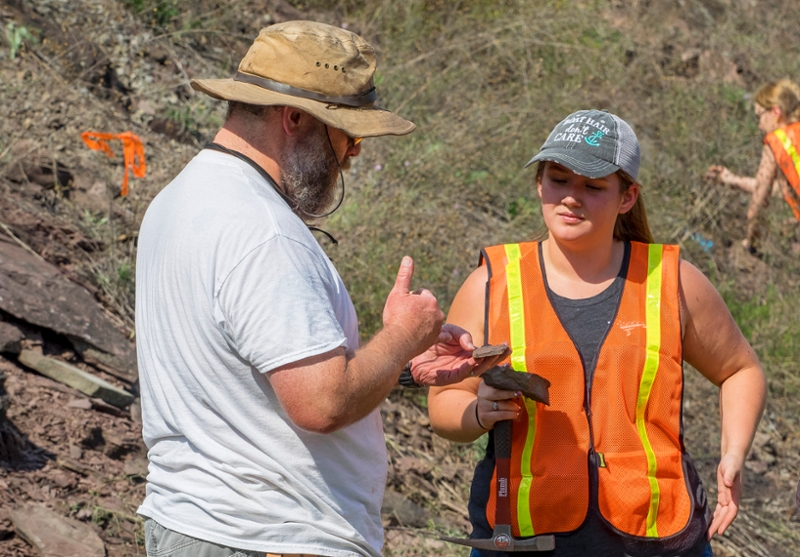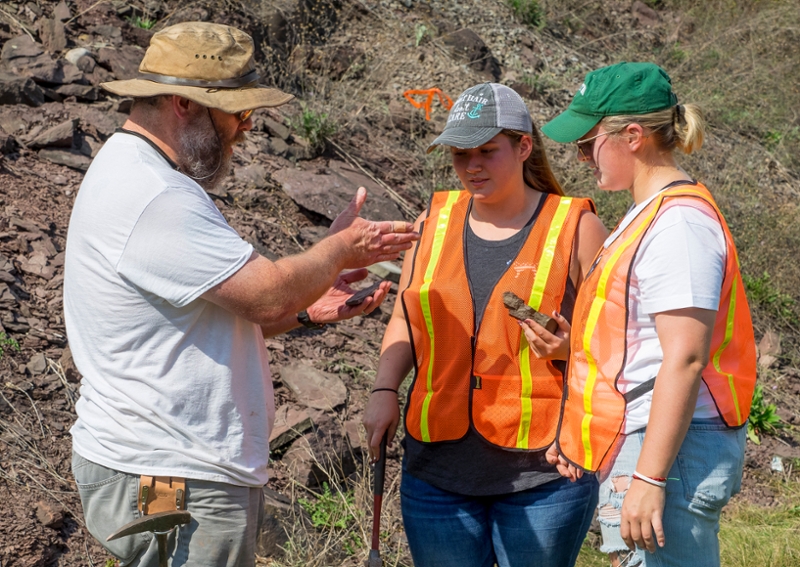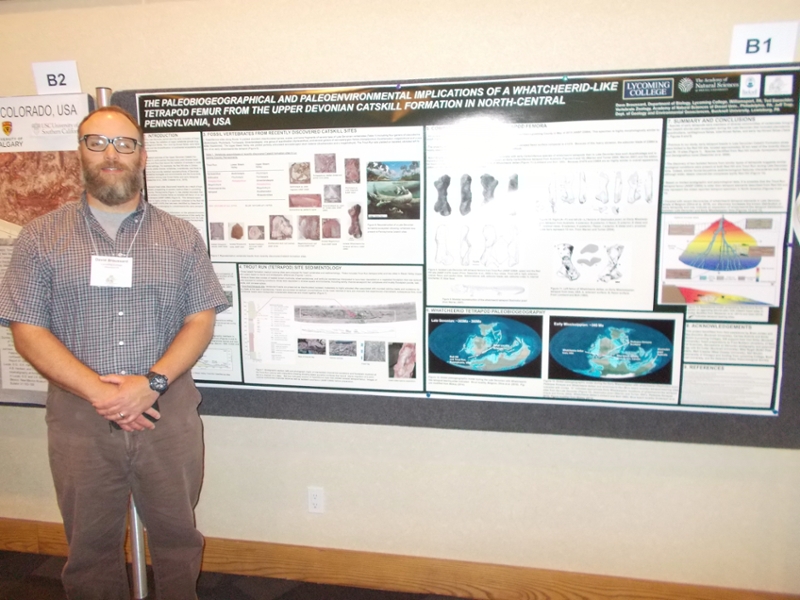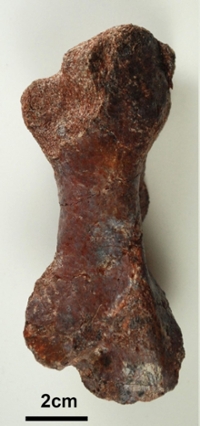
Broussard points out fossils to Darby Willingham '19 while Cali Snyder '19 digs in the background during a recent Natural History of Dinosaurs class field trip.
Download Image: Web
Lycoming College’s David Broussard, Ph.D., assistant professor of biology, this summer presented research at the annual meeting of the Society of Vertebrate Paleontology in Calgary, Alberta, Canada, on a 365 million-year-old leg bone that he and his students discovered in Lycoming County. The fossil is that of a femur that once belonged to a species of early tetrapod — a four-limbed animal — and dates back to the Late Devonian Period, when vertebrates made the transition from fish-like to more land-living types of animals.
During the late Devonian period, north central Pennsylvania was a vast subtropical floodplain dominated by rivers, small streams, ponds and wetlands. Evidence of these habitats and environments is contained within the red beds of the Catskill formation. Broussard spoke to meeting attendees about what this discovery and other similar discoveries at the Red Hill site in Clinton County, Pa., indicate about species of early tetrapods that occupied this floodplain habitat during the Late Devonian period. In addition, he discussed how other fossils discovered at the site, as well as the geology of the exposures along Route 15, help him and his collaborators to understand and interpret the habitats and environments that these animals occupied.
The tetrapod specimen is now part of the Vertebrate Paleontology collections at the Academy of Natural Sciences of Drexel University in Philadelphia, where many important transitional and early tetrapod fossils from North America are kept. Broussard uses a cast of the specimen and many other vertebrate fossils including those of dinosaurs to teach students about vertebrate evolution.
“Having these important sites close to campus allows me to take students out to see where a significant transition in vertebrate evolution was occurring in the Late Devonian,” said Broussard “Students get to touch and see evidence of fossil animals and plants during this important period of time.”
His research into the paleoecology of the fin to limb transition in vertebrates is ongoing. He hopes to locate more fossil sites that preserve the animals and ecological conditions associated with this important event. “There is much exposed rock of the right age and type along roadsides in Pennsylvania where I haven’t looked yet,” he mused.
The presentation was coauthored by Jeff Trop, Ph.D., professor of geology at Bucknell University; and Ted Daeschler, Ph.D., associate professor of biodiversity, earth and environmental science; associate curator of vertebrate zoology; and vice president for systematic biology and the library for the Academy of Natural Sciences at Drexel University.

Broussard shows geologically preserved patterns of stream flow to students Darby Willingham '19 and Julia Suchanek '18 during a recent Natural History of Dinosaurs class field trip.

Broussard presents research at the annual meeting of the Society of Vertebrate Paleontology in Calgary, Alberta, Canada.

Tetrapod femur